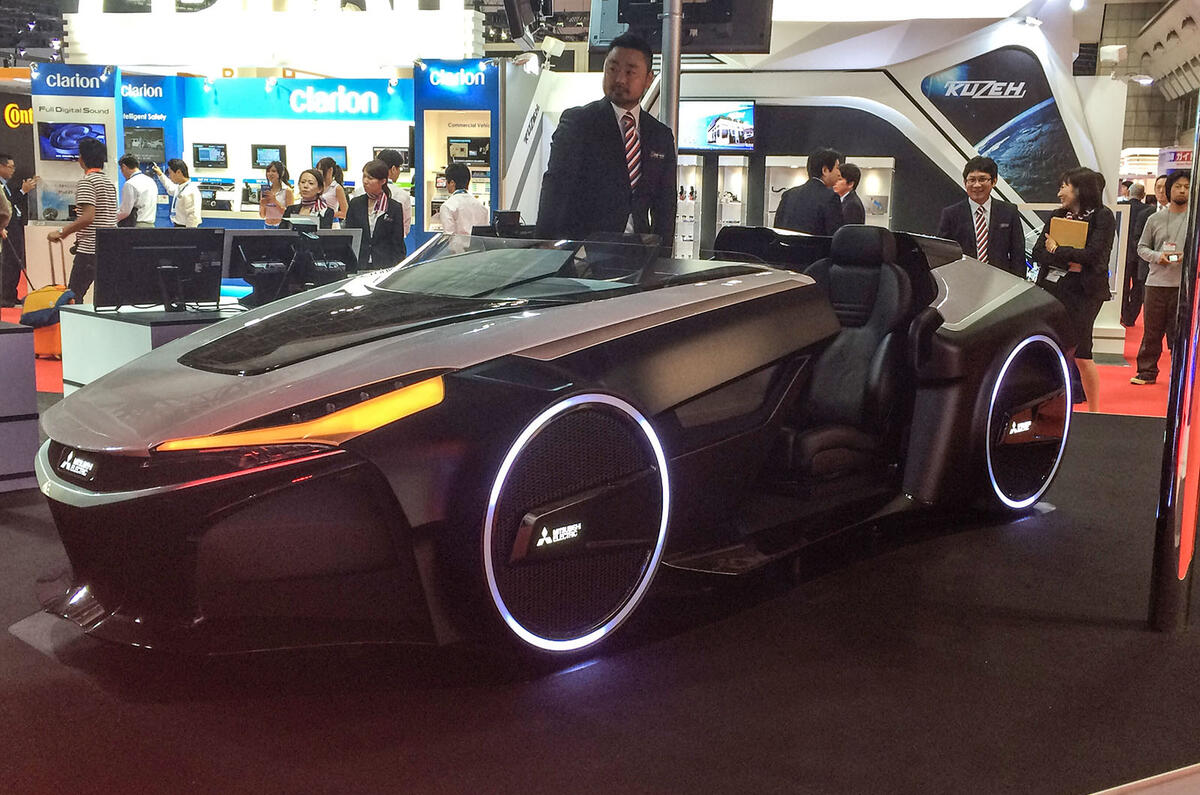This is the Mitsubishi Emirai 3 xDas, a Tokyo motor show concept that showcases the firm’s plans for future driving assistance technology.
Mitsubishi says its guiding theme has been 'making feelings come true', which hints at its goal of creating a car that can automatically react to the driver’s requirements with minimal inputs.
Inside, the cabin features distinctive LCD displays that are laminated and bonded to allow for ease of visibility and operation in all conditions. The displays sit on either side of the driver and are fully customisable.
All cabin operations can be controlled with gestures rather than making physical contact with buttons and dials, while the driver also has the option of putting on a wearable device that vibrates to alert them to any hazards or changes in the car’s set-up.
The Emirai 3 xDas also has a head-up display that highlights potential hazards up the road and can warn of dangers ahead, including around corners at junctions. It uses 3D mapping to display the information.
A camera points at the driver at all times, monitoring the facial expression, and links that information to a cardiograph, before varying the car’s responses accordingly. This information is also automatically analysed against historical data of the driver’s physical condition in order to advise on rest stops. In addition, the system records data on hazard hotspots for sharing to other drivers.
Mitsubishi Emirai3 xAuto
Also on show in Tokyo is the Mitsubishi Emirai3 xAuto, which showcases the firm’s fully autonomous driving technology. Mitsubishi says it offers 'smooth, stable, self-driving operations'.
The Emirai3 xAuto uses 3D mapping to plot a route and navigates using sat-nav. It can also react to road conditions and other traffic using road-to-vehicle and vehicle-to-vehicle communication systems developed by Mitsubishi.
These systems also allow the car to detect potential collisions and avert them, and the use of latest millimetre-wave radar and camera technologies is claimed to have provided a breakthrough in detecting moving and stationary objects even in the dark and over 'long distances'.
The car can also perform lane-changing manoeuvres automatically, even in low visibility, and park itself, with the driver either operating the system from behind the wheel or with the use of a remote control.
Read more Tokyo motor show news
Get the latest car news, reviews and galleries from Autocar direct to your inbox every week. Enter your email address below:









Add your comment